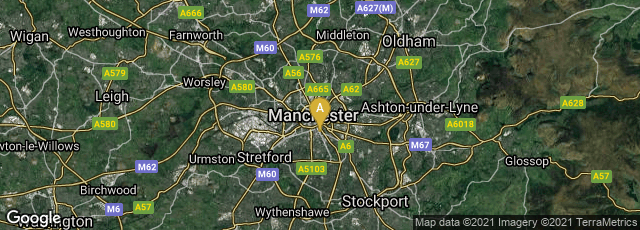

A: Manchester, England, United Kingdom
In 1913 and 1914 English physicist Henry G. J. Moseley published "The High-Frequency Spectra of the Elements," Philosophical Magazine 26 (1913): 1024-34; 27 (1914): 703-13. 1 plate.
Moseley's outstanding contribution to physics was the justification from physical laws of the previous empirical and chemical concept of the atomic number. This stemmed from his development of Moseley's Law concerning the characteristic x-rays that are emitted by atoms published in his paper of 1913. "It is historically important in quantitatively justifying the conception of the nuclear model of the atom, with all, or nearly all, positive charges of the atom located in the nucleus, and associated on an integer basis with atomic number. Until Moseley's work, 'atomic number' was merely an element's place in the periodic table, and was not known to be associated with any measureable physical quantity. Moseley was able to show that the frequencies of certain characteristic X-rays emitted from chemical elements are proportional to the square of a number which was close to the element's atomic number; a finding which supported van den Broek and Bohr's model of the atom in which the atomic number is the same as the number of positive charges in the nucleus of the atom" (Wikipedia article on Moseley's Law, accessed 07-10-2011).
In 1913 Moseley, a member of Ernest Rutherford’s Manchester Institute, set out to test the doctrine of atomic number by mapping the characteristic K and L spectra of the elements. Using a modification of the x-ray spectroscopy techniques developed by the Braggs, Moseley “obtained the principal lines of the x-ray spectra of most elements by registering their ionization and photographic images. In November of that year he reported his results to Bohr as confirming the new theory of atomic constitutions and being ‘extremely simple.’ . . . He also succeeded in correcting the sequence of transition elements to be Fe-Co-Ni according to increasing ‘atomic number’ Z (rather than to their atomic weight A). That is, the neutral nickel atom possessed a higher nuclear charge and one electron more than the neutral cobalt atom, despite the fact that it had a smaller atomic weight” (Twentieth Century Physics I, pp. 158-59).
When World War I broke out Moseley left his research work at the University of Oxford to volunteer for the Royal Engineers of the British Army. He was assigned to the fighting force that invaded the region of Gallipoli, Turkey, in April 1915, as a telecommunications officer. During the Battle of Gallipoli on August 10, 1915 Moseley was shot and killed at the age of 27. Some prominent authorities have speculated that Moseley would have been deserving of the Nobel Prize in Physics in 1916 — which went unawarded — if he had not died in the service of the British Army.
Carter & Muir, Printing and the Mind of Man (1967) no. 407.